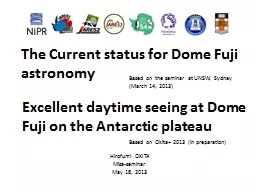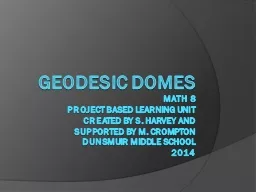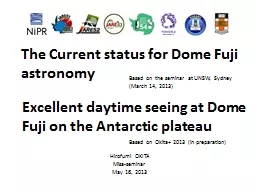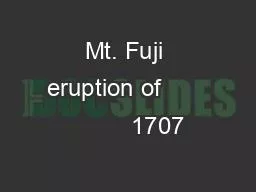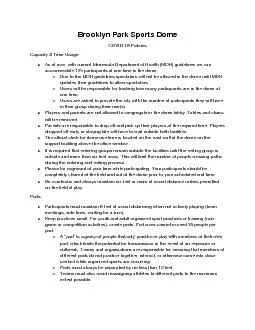PPT-The Current status for Dome Fuji
Author : aaron | Published Date : 2019-01-22
a stronomy Based on the seminar at UNSW Sydney March 14 2013 Hirofumi OKITA Misa seminar May 16 2013 Excellent daytime seeing at Dome Fuji on the Antarctic plateau
Presentation Embed Code
Download Presentation
Download Presentation The PPT/PDF document "The Current status for Dome Fuji" is the property of its rightful owner. Permission is granted to download and print the materials on this website for personal, non-commercial use only, and to display it on your personal computer provided you do not modify the materials and that you retain all copyright notices contained in the materials. By downloading content from our website, you accept the terms of this agreement.
The Current status for Dome Fuji: Transcript
Download Rules Of Document
"The Current status for Dome Fuji"The content belongs to its owner. You may download and print it for personal use, without modification, and keep all copyright notices. By downloading, you agree to these terms.
Related Documents

